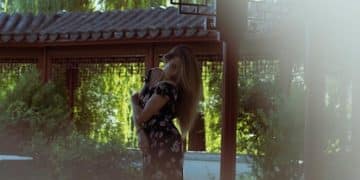K-Drama Production Quality: Financial Impact on U.S. Viewers

The financial impact of K-Drama production quality significantly influences U.S. viewer experience, with varying budgets directly affecting visual effects, casting, and narrative execution across different shows.
For U.S. viewers, the financial impact of K-Drama production quality is a subtle yet powerful factor influencing their viewing choices and overall satisfaction. While often unseen, the budget behind a K-Drama directly shapes everything from its visual grandeur to the caliber of its cast, ultimately determining how a story resonates. This article delves into how varying production investments manifest on screen and affect the audience experience.
Understanding K-Drama Production Budgets
The world of K-Drama production is a complex ecosystem where financial investment directly correlates with on-screen spectacle. Budgets can range from modest, independent productions to blockbuster series costing tens of millions of dollars. These monetary decisions are not arbitrary; they reflect strategic choices about narrative scope, target audience, and global aspirations.
A higher budget often translates into a more polished final product, but it’s not simply about throwing money at a project. It involves careful allocation across various departments, each contributing to the overall quality and appeal of the drama. Understanding these allocations helps U.S. viewers appreciate the nuances of what they are watching.
Key Budget Allocation Areas
- Casting: Securing top-tier actors often accounts for a significant portion of the budget, as their star power guarantees viewership and international appeal.
- Set Design and Locations: Elaborate historical sets, futuristic cityscapes, or exotic international filming locations require substantial financial backing.
- Special Effects (VFX): High-quality CGI and practical effects are crucial for fantasy, sci-fi, or action-heavy dramas, demanding significant investment in skilled artists and technology.
- Screenwriting and Directing: Talented writers and directors command higher fees, but their expertise is vital in crafting compelling narratives and visually stunning scenes.
Ultimately, the budget acts as the foundation upon which a K-Drama is built. It dictates the resources available to bring a story to life, influencing everything from the smallest detail in a character’s costume to the grandest cinematic sequence. For U.S. viewers, this often means a more immersive and visually captivating experience when watching higher-budget productions, shaping their expectations for future K-Drama releases.
Case Study 1: “Mr. Sunshine” – A Masterclass in High Investment
“Mr. Sunshine” stands as a testament to what a substantial budget can achieve in K-Drama production. Reportedly one of the most expensive K-Dramas ever made, its financial backing is evident in every frame, creating an unparalleled viewing experience for audiences, particularly those in the U.S. who appreciate cinematic grandeur.
The series, set during the late 19th and early 20th century, required meticulous historical accuracy. This commitment translated into sprawling, authentic sets, intricate costume designs for a vast ensemble, and extensive location filming that transported viewers back in time. The investment in these elements was not merely aesthetic; it served to ground the complex historical narrative, making it more tangible and emotionally resonant.
Visual Spectacle and Narrative Depth
- Historical Authenticity: The production team invested heavily in researching and recreating the period, from architecture to everyday items, ensuring a high level of detail.
- Cinematic Quality: The cinematography was on par with major motion pictures, utilizing advanced camera techniques and lighting to create breathtaking visuals.
- Ensemble Cast: The drama featured a star-studded cast, including Lee Byung-hun and Kim Tae-ri, whose performances were undoubtedly a significant budget allocation but paid off in critical acclaim and viewer engagement.
For U.S. viewers, “Mr. Sunshine” set a new benchmark for K-Drama production quality. Its high budget allowed for a seamless blend of epic storytelling, stunning visuals, and powerful performances, solidifying K-Drama’s reputation as a global entertainment powerhouse capable of competing with Western productions in terms of scale and artistry.


Case Study 2: “Kingdom” – The Power of Genre and VFX Investment
Netflix’s “Kingdom” exemplifies how targeted financial investment in genre-specific elements, particularly special effects and action sequences, can attract and captivate a global audience, including a significant U.S. viewership. As a zombie historical thriller, the series demanded a budget that could deliver believable gore, large-scale battles, and a chilling atmosphere.
The show’s high production value is immediately apparent in its expertly choreographed fight scenes, the realistic portrayal of the zombie plague, and the detailed historical settings. This investment ensures that the fantastical elements feel grounded within the historical context, elevating the show beyond a typical zombie narrative into a sophisticated piece of television.
Impact of Specialized Budgeting
The decision to pour resources into high-quality visual effects and action sequences was crucial for “Kingdom.” Unlike dramas that rely heavily on romantic plotlines, “Kingdom” needed to deliver on its promise of horror and historical intrigue. The budget allowed for:
- Exceptional Creature Design: The zombies were terrifyingly real, with intricate makeup and movement that enhanced the horror aspect.
- Dynamic Action Choreography: Battle scenes were meticulously planned and executed, utilizing numerous extras and elaborate camera work.
- Authentic Period Details: Despite the fantastical elements, the historical setting and costuming remained highly authentic, adding to the show’s credibility.
For U.S. viewers accustomed to high-quality Western zombie productions, “Kingdom” offered a refreshing and equally compelling alternative. The significant financial backing ensured that the show could meet and even exceed expectations in terms of genre execution, proving that K-Dramas can excel in diverse genres with appropriate investment.
Case Study 3: “Reply 1988” – The Art of Modest Budget, High Impact
In stark contrast to epic historical or genre-heavy dramas, “Reply 1988” demonstrates that a K-Drama doesn’t always require an astronomical budget to achieve profound emotional impact and widespread popularity. While not a low-budget show, its financial investment was clearly focused on character development, nostalgic storytelling, and authentic period recreation rather than grand spectacles.
The charm of “Reply 1988” lies in its meticulous attention to detail in recreating the late 1980s in a Seoul neighborhood. The budget was allocated to realistic set designs, period-appropriate props, and a talented ensemble cast that could convey the warmth and complexities of family and friendship. This focus resonated deeply with U.S. viewers, many of whom found universal themes within its specific cultural context.
Strategic Allocation for Emotional Resonance
The production strategy for “Reply 1988” was to invest in elements that would foster connection and nostalgia:
- Authentic Set Dressing: Recreating a 1988 neighborhood required careful attention to detail in homes, shops, and streetscapes, which was achieved through clever set design rather than massive construction.
- Strong Scriptwriting: The emphasis was on a well-crafted narrative that explored human relationships and everyday life, reducing the need for expensive action sequences or VFX.
- Ensemble Chemistry: The budget allowed for a cast that could genuinely embody their roles and build believable relationships, which was central to the show’s appeal.
“Reply 1988” proves that the financial impact of K-Drama production quality isn’t solely about lavish spending. Instead, it highlights how strategic budgeting, focusing on storytelling and character, can yield immense emotional returns and captivate a diverse audience, demonstrating that quality can be achieved through thoughtful investment in core narrative elements.
Case Study 4: “Nevertheless” – Navigating Contemporary Romance with Budget Constraints
“Nevertheless,” a contemporary romance drama, offers an interesting perspective on how production quality can be maintained and perceived within a more constrained budget compared to its blockbuster counterparts. While still benefiting from professional production, its financial scope is visibly narrower, leading to different artistic choices that still aim to appeal to U.S. viewers interested in modern K-Drama narratives.
The budget for “Nevertheless” was primarily focused on securing popular lead actors (Song Kang and Han So-hee), whose star power is a significant draw, and maintaining a sleek, modern aesthetic. The settings are typically contemporary urban environments, which naturally require less elaborate construction than historical or fantasy dramas. This allocation allows the production to prioritize character interaction and visual appeal within its genre.
Budgetary Focus in Modern Romances
For dramas like “Nevertheless,” the financial investment is often channeled into:
- Star Power: The leads are often established stars, ensuring a built-in audience and strong pre-release buzz.
- Stylized Cinematography: Emphasis on aesthetic shots, close-ups, and color grading to enhance the romantic mood, which can be achieved without massive VFX budgets.
- Contemporary Settings: Utilizing existing urban locations and minimalist set designs keeps costs lower while maintaining a modern, relatable feel.
For U.S. viewers, while “Nevertheless” might not boast the same grand scale as “Mr. Sunshine,” its production quality is still high within its genre. The budget efficiently supports the visual storytelling and character-driven plot, proving that effective financial planning can still deliver a compelling and aesthetically pleasing drama, even if it lacks the epic scope of higher-budget productions. It highlights how budget influences genre execution rather than universal quality.
Case Study 5: “The Sound of Your Heart” – Leveraging Creativity on a Smaller Budget
“The Sound of Your Heart” stands as a prime example of a web series successfully transitioning to broadcast television, showcasing how creativity and smart production choices can overcome significant budget limitations. This comedy, known for its rapid-fire humor and unconventional storytelling, had a noticeably smaller budget compared to mainstream dramas, yet it garnered immense popularity, particularly among a niche U.S. audience.
The financial constraints meant less emphasis on elaborate sets or high-end special effects. Instead, the production leaned heavily on its witty script, strong comedic performances from its cast (led by Lee Kwang-soo), and innovative directorial choices. This approach allowed the series to carve out a unique identity without requiring a blockbuster budget, demonstrating that ingenuity can be a powerful financial asset.
Innovation in Low-Budget Production
The success of “The Sound of Your Heart” can be attributed to:
- Script-Driven Humor: Investing in talented writers who could produce consistently funny and relatable content, reducing reliance on expensive visual gags.
- Character-Focused Comedy: Leveraging the comedic timing and chemistry of its cast, which is a more cost-effective approach than large-scale action.
- Minimalist Set Design: Using simple, everyday locations and clever camera work to create comedic situations rather than building elaborate sets.
For U.S. viewers, “The Sound of Your Heart” proved that K-Dramas with lower budgets can still deliver high-quality entertainment when focusing on strong narratives and performances. It underscores that the financial impact of K-Drama production quality is not always about sheer volume of money, but rather how effectively that money is used to maximize the unique strengths of a particular show, especially in niche genres like comedy.
The Broader Financial Impact on U.S. Viewers
The varying production qualities and budgets across K-Dramas have a tangible financial impact on U.S. viewers, influencing everything from subscription choices to perceived value. When a K-Drama like “Mr. Sunshine” or “Kingdom” showcases cinematic quality, intricate storytelling, and high production values, it elevates the overall perception of K-content. This, in turn, encourages U.S. viewers to invest in streaming platforms that offer such premium content.
Conversely, dramas with noticeably lower production quality, perhaps due to budget constraints, might struggle to capture or retain the attention of U.S. audiences accustomed to high-tier productions. While a compelling story can often overcome visual shortcomings, a consistent lack of polish can lead to viewer disengagement and a reluctance to recommend or re-watch.
Viewer Expectations and Streaming Economics
The financial implications extend beyond individual shows:
- Platform Subscriptions: High-quality K-Dramas drive subscriptions to services like Netflix, Viki, and Kocowa, as viewers seek access to premium content.
- Merchandise and Tourism: Successful, well-produced dramas often lead to increased interest in K-Pop, Korean fashion, food, and even tourism, generating further economic activity.
- Future Investment: U.S. viewer engagement and demand for high-quality K-Dramas encourage further investment from studios and distributors, creating a virtuous cycle.
Ultimately, the financial decisions made during K-Drama production ripple outwards, directly affecting what U.S. viewers choose to watch, what platforms they subscribe to, and their overall perception of the value of Korean entertainment. It’s a clear demonstration that investment in quality is not just an artistic choice but a strategic business decision with significant global reach.
| Key Aspect | Impact on U.S. Viewers |
|---|---|
| High Budget Productions | Cinematic visuals, large-scale narratives, star-studded casts; enhance viewer immersion and perceived value. |
| Modest Budget Focus | Emphasis on strong scripts, character development, and authentic period details; fosters deep emotional connection. |
| Genre-Specific Investment | Targeted spending on VFX or action sequences in genres like fantasy/horror; meets specific genre expectations. |
| Overall Viewer Impact | Influences streaming platform subscriptions, cultural engagement, and shapes future K-Drama viewing preferences. |
Frequently Asked Questions About K-Drama Budgets
Higher budgets allow for superior CGI, detailed practical effects, and more extensive action sequences. This results in visually stunning scenes, particularly crucial for fantasy, historical, or sci-fi K-Dramas, enhancing viewer immersion and realism for U.S. audiences.
Not always. While larger budgets provide more resources for production values, a compelling script, strong direction, and talented acting can elevate a modestly budgeted K-Drama. Quality is a blend of financial investment and creative execution, as seen in shows like “Reply 1988.”
Significant portions of high K-Drama budgets are allocated to securing top-tier, popular actors. Their star power attracts a wider audience, including international viewers, and often ensures higher production quality due to their experience and draw, leading to greater viewership.
High-quality K-Dramas with noticeable production values significantly drive subscriptions to U.S. streaming platforms. Viewers are willing to pay for access to premium content, directly impacting the platforms’ revenue and encouraging further investment in Korean productions.
Absolutely. “The Sound of Your Heart” demonstrates that strong writing, innovative direction, and comedic talent can lead to global success even with a smaller budget. Creativity and compelling storytelling often resonate more than sheer financial outlay for certain genres.
Conclusion
The financial impact of K-Drama production quality is a multifaceted phenomenon that profoundly shapes the viewing experience for U.S. audiences. From the epic grandeur of “Mr. Sunshine” and the visceral thrills of “Kingdom” to the heartfelt nostalgia of “Reply 1988,” the subtle charm of “Nevertheless,” and the comedic ingenuity of “The Sound of Your Heart,” each drama exemplifies how production budgets are strategically allocated. These investments directly influence visual effects, casting, set design, and narrative depth, ultimately determining how a K-Drama resonates with its global viewership. For U.S. viewers, understanding these budgetary nuances enriches their appreciation for K-content and underscores the strategic choices that bring these captivating stories to life on screen.
![Unveiling the Allure of [K-Drama Title]: A Comprehensive Review Unveiling the Allure of [K-Drama Title]: A Comprehensive Review - Cover Image](https://newsdoramauniverse.com/wp-content/uploads/2025/07/newsdoramauniverse.com_14_1753807159_534347b0_cover-360x180.jpg)




